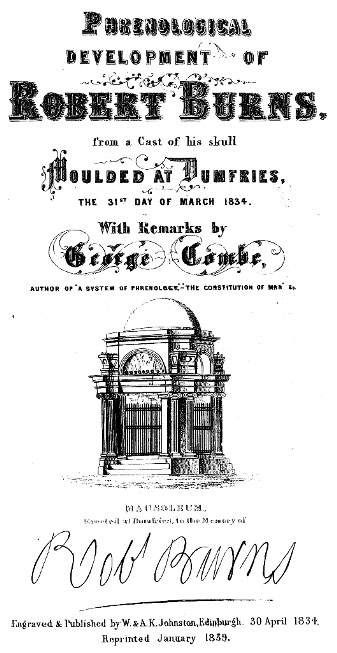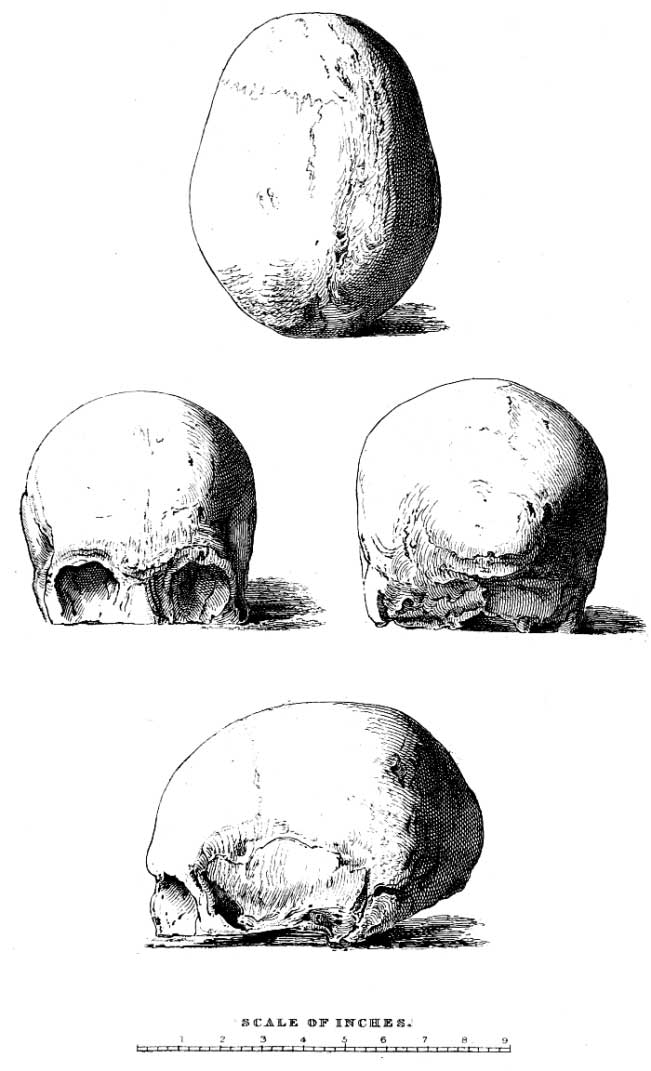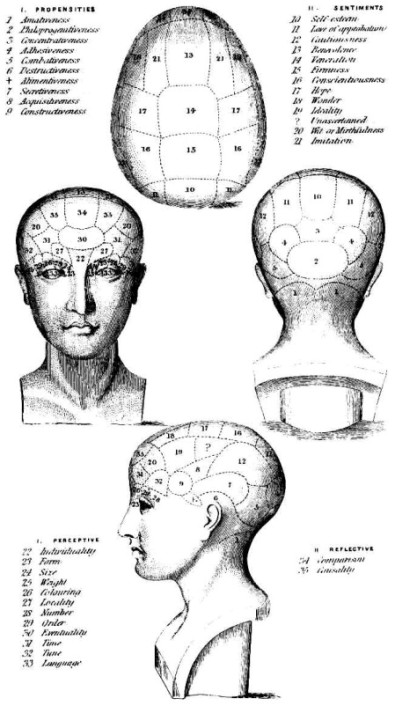
[Pg 1]

[Pg 2]

VIEWS OF THE SKULL OF ROBERT BURNS.
[Pg 2]

KEY TO THE PHRENOLOGICAL ORGANS.
[Pg 4]
OBSERVATIONS ON THE SKULL OF BURNS,
BY
GEORGE COMBE.
Robert Burns was born on 25th January 1759, and died at Dumfries on 21stJuly 1796, in the 37th year of his age, and, on the 26th, was interred inSt Michael's Churchyard. Eighteen years afterwards, a Mausoleum waserected by subscription to his memory in that cemetery; and, on the 19thSeptember 1815, his remains were privately exhumed and transferred to thevault attached to it. Mrs Burns, the Poet's widow, having died on 26thMarch 1834, the vault was opened for the purpose of depositing her remainsbeside those of her husband; and the gentlemen who took charge of theproceedings, being aware of the anxiety which had long been generally feltto obtain a Cast of the Poet's Skull, resolved to avail themselves of theopportunity to gratify this desire. The consent of the relatives havingbeen obtained, Mr M'Diarmid, the Editor of the Dumfries Courier, wentwith several other gentlemen to the vault, and successfully effected theirpurpose.
The following description is written by Mr Archibald Blacklock, Surgeon:"The cranial bones were perfect in every respect, if we except a littleerosion of their external table, and firmly held together by theirsutures; even the delicate bones of the orbits, with the triflingexception of the os unguis in the left, were sound and uninjured bydeath and the grave. The superior maxillary bones still retained the fourmost posterior teeth on each side, including the dentes sapientiæ, and allwithout spot or blemish; the incisores, cuspidati, &c., had, in allprobability, recently dropped from the jaw, for the alveoli were butlittle decayed. The bones of the face and palate were also sound. Somesmall portions of black hair, with a very few grey hairs intermixed, wereobserved while detaching some extraneous matter from the occiput. Indeed,nothing could exceed the high state of preservation in which we found thebones of the cranium, or offer a fairer opportunity of supplying what hasso long been desiderated by Phrenologists—a correct model of our immortalPoet's head; and in order to accomplish this in the most accurate andsatisfactory manner, every particle of sand or other foreign body wascarefully washed off, and[Pg 5] the plaster-of-Paris applied with all the tactand accuracy of an experienced artist. The Cast is admirably taken, andcannot fail to prove highly interesting to Phrenologists and others.
"Having completed our intention, the